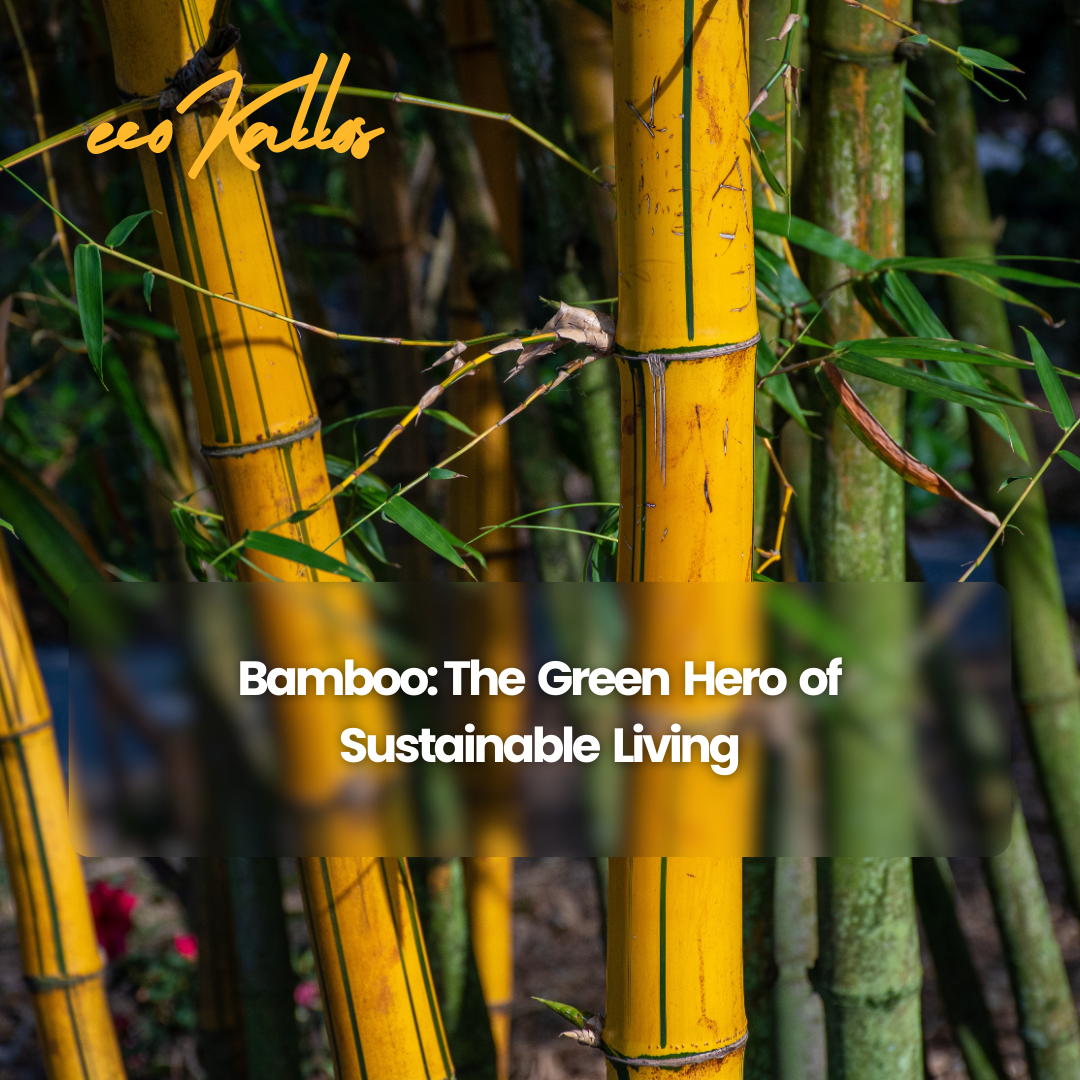Bamboo isn’t just a fast-growing plant—it’s one of the most powerful natural solutions to many environmental and economic challenges today. From climate change to rural development, bamboo plays a leading role in the story of sustainable living.
Why Bamboo Matters
With growing concerns over deforestation, climate instability, and the need for renewable resources, bamboo has emerged as a low-impact, high-value alternative to traditional materials.
Environmental Benefits
- Fast Growth
Bamboo holds the record as one of the fastest-growing plants on Earth—some species can grow up to 91 cm (35 inches) in a single day. - Carbon Sequestration
Bamboo absorbs more carbon dioxide and releases more oxygen than many hardwood trees, making it a valuable carbon sink for climate mitigation efforts. - Soil Restoration
Its deep, fibrous roots prevent erosion and help rehabilitate degraded or marginal lands. - Natural Regeneration
Bamboo regenerates without replanting, which drastically reduces the need for reforestation efforts and the use of fertilizers or pesticides.
How Bamboo is Cultivated
One of the reasons bamboo is gaining attention globally is its low-maintenance cultivation process:
- Grows well in diverse climates, from tropical zones to cooler temperate areas.
- Thrives with little water and no need for chemical inputs.
- Matures in just 3 to 5 years, compared to decades for many tree species.
- Propagated through rhizomes or cuttings, allowing fast and sustainable expansion.
Versatile Uses of Bamboo
Bamboo is more than just a sustainable material—it’s also incredibly versatile. Today, bamboo is used in:
- Textiles and Clothing
Bamboo fabric is soft, breathable, and biodegradable—ideal for eco-conscious wardrobes. - Home and Kitchen Products
Bamboo is widely used in utensils, flooring, furniture, and décor, offering durability with a natural aesthetic. - Construction
In many parts of the world, bamboo is used in scaffolding, green architecture, and even as reinforcement for buildings due to its strength-to-weight ratio. - Paper and Bioenergy
Bamboo pulp is a sustainable alternative to wood in paper production, and it’s being explored as a renewable source of biomass energy.
The Benefits of Bamboo Clothing
- A sustainable fashion choice
Because of its renewability and low impact on the environment, bamboo clothing supports a greener textile industry. It offers a way to reduce reliance on resource-heavy materials while still delivering quality, long-lasting garments. - Soft and gentle on the skin
Bamboo fabric is incredibly smooth and soft, often compared to cashmere or silk. It’s naturally hypoallergenic, making it a great choice for people with sensitive skin, allergies, or eczema. - Breathable and temperature-regulating
The fibers in bamboo fabric allow air to flow freely, keeping your body cool in hot weather and warm in cooler temperatures. It also wicks moisture away from the skin, keeping you dry and comfortable throughout the day. - Naturally antibacterial and odor-resistant
Bamboo contains a natural bio-agent called “bamboo kun,” which helps resist bacteria growth. This means clothes made from bamboo stay fresher for longer and require less frequent washing—ideal for workout clothes, travel, or daily wear. - Eco-friendly farming and production
Bamboo grows extremely fast (some species grow over 3 feet in 24 hours), and it does so without the need for pesticides, herbicides, or chemical fertilizers. It requires significantly less water than cotton and regenerates from its own roots, eliminating the need for replanting.
Backed by Research: Bamboo as a Climate and Poverty Solution
In a comprehensive report published by the Food and Agriculture Organization (FAO), titled “The Poor Man’s Carbon Sink: Bamboo in Climate Change and Poverty Alleviation”, bamboo is recognized for its dual environmental and economic potential.
According to the study:
- Bamboo’s rapid growth makes it highly effective in carbon sequestration, helping to mitigate greenhouse gas emissions.
- It supports poverty reduction, especially in rural areas, by providing affordable building materials and creating employment in manufacturing and farming.
- Bamboo grows well on degraded lands, offering opportunities for land restoration and environmental rehabilitation.
The FAO encourages the inclusion of bamboo in national climate strategies and supports further investment in bamboo-based industries as a path to sustainability and rural empowerment.
Full report link:
https://forestindustries.eu/sites/default/files/userfiles/1file/k6887e00.pdf
Final Thoughts
Bamboo represents more than just a plant—it’s a symbol of resilience, sustainability, and innovation. Its environmental benefits, rapid renewability, and vast range of uses make it an essential component in building a greener future.
If you’re looking for eco-friendly choices, consider bamboo products—but make sure they are certified (e.g., OEKO-TEX for textiles or FSC for raw materials) to ensure responsible sourcing and processing.
